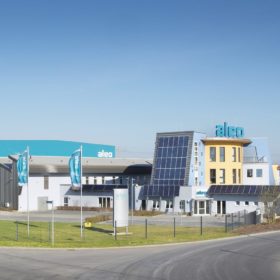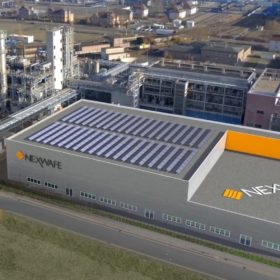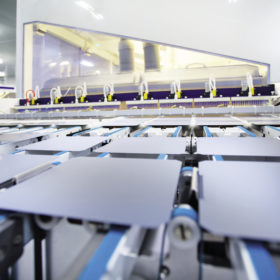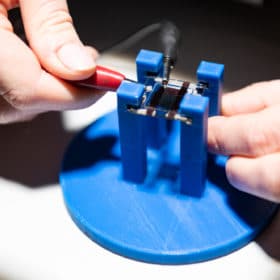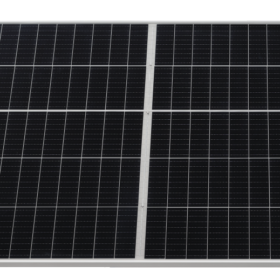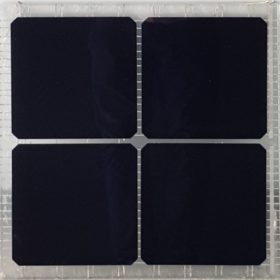Aleo Solar announces 400 W module
The German manufacturer will offer the solar module for rooftop PV applications from the third quarter of 2021. Aleo Solar will install a new production line at its factory for the new product.
Nexwafe raises €10 million for commercialization of wafer tech
Wafer manufacturer Nexwafe is currently trying to commercialize its highly efficient monocrystalline wafer technology.
Performance improvements for anomalous photovoltaic effect
A German research team has created a new solar cell architecture with self-assembled, three-dimensional nanocomposite thin film. The special cell configuration purportedly improves electrical output by a factor of five.
Chinese PV Industry Brief: More wafer and polysilicon capacity and new suppy deals
Wuxi Autowell has begun construction on its 50 GW wafer factory in Guangdong province and Longi and Wuxi Shangji Automation have announced new supply deals. GCL-Poly has announced it will raise the production capacity of its factory in Jiangsu from 6,000 to 10,000 metric tons – despite the company suffering a cross-default at the weekend.
Dual passivation tech for 20.14%-efficient perovskite solar cell
Europium ions have been used by Chinese researchers to passivate both the perovskite and electron transport layer (ETL) films of a MAPbI3 perovskite solar cell. As a result, the device’s efficiency was raised by approximately 1.5%. The dual passivation approach also achieved an increase in the cell’s fill factor and open-circuit voltage.
Chinese PV Industry Brief: Another huge glass order and new profit forecasts
Module maker Risen has agreed to buy 34 GW of solar glass from Flat Glass Group (FGG). Both Trina and Goodwee announced strong profit growth for 2020.
Inverted perovskite solar cell with transition metal carbides achieves 19.2% efficiency
A Russian-Italian research group has developed a two-dimensional transition metal carbide, known as MXenes, to collect photocurrent in perovskite cells. The cells were built with an inverted configuration and are based on a nickel(II) oxide hole transporting layer. The scientists claim that the doping technique allowed them to increase the efficiency of the cell by more than 2%.
Mini perovskite solar module with 14.55% efficiency
The 5x5cm device was developed by a Japanese research group. The thickness of the perovskite films was increased to reduce defects and pinholes and this was achieved by adding ammonium chloride to the lead iodine solution used in the formation of the films. The device was able to work for 1,600 hours at more than 80% of this efficiency.
Chinese PV Industry Brief: Strong profit growth for Sungrow, new wafer prices from Longi
Furthermore, Risen predicts its solar module shipments will reach 15 GW this year and Sze Tan Hung has increased her stake in solar cell and panel maker Solargiga.
3-D multi‐ribbon interconnection tech for IBC cells
The interconnection tech, developed by scientists at the Belgian research institute Imec, is based on a three-dimensional fabric of encapsulant with incorporated horizontal and vertical solder‐coated metal ribbons. Mini solar modules built with the proposed technique have provided interesting results in tests for thermal cycling reliability, showing very limited degradation.
